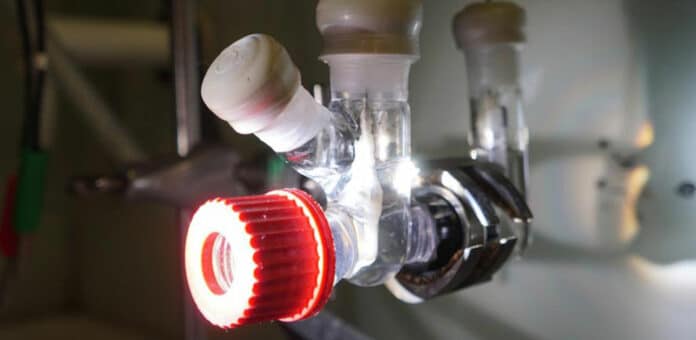Solar-driven conversion of CO2 and plastics into value-added products provides a potential sustainable route towards a circular economy, but their simultaneous conversion in an integrated process is challenging. Scientists have developed a system that can transform plastic waste and greenhouse gases into sustainable fuels and other valuable products — using just the energy from the Sun.
Scientists from the University of Cambridge created the system, the first solar-powered reactor to transform two waste streams into two chemical products simultaneously. The reactor converts carbon dioxide (CO2) and plastics into different products that are useful in various industries.
In experiments, CO2 was transformed into syngas, a crucial component of sustainable liquid fuels, and plastic bottles into glycolic acid, a substance used extensively in cosmetics. By altering the catalyst utilized in the reactor, the system is easily tweaked to yield different products.
To move toward a more sustainable, circular economy, it is crucial to transform plastics and greenhouse gases—two of the greatest threats to the environment—into usable and valued products.
Professor Erwin Reisner from the Yusuf Hamied Department of Chemistry said, “Converting waste into something useful using solar energy is a major goal of our research. Plastic pollution is a huge problem worldwide, and often, many of the plastics we throw into recycling bins are incinerated or in a landfill.”
Subhajit Bhattacharjee, the paper’s co-first author, said, “A solar-driven technology that could help to address plastic pollution and greenhouse gases at the same time could be a game-changer in the development of a circular economy.”
Co-first author Dr. Motiar Rahaman said, “We also need something that’s tuneable so that you can easily make changes depending on the final product you want.”
The scientists created an integrated reactor with two distinct compartments: one for greenhouse gases and one for plastic. The reactor uses a perovskite-based light absorber, a viable substitute for silicon in next-generation solar cells.
The group created various catalysts that were incorporated into the light absorber. The ultimate product could then be altered by altering the catalyst. Testing of the reactor revealed that it could convert PET plastic bottles and CO2 into several carbon-based fuels, such as CO, syngas, or formate, in addition to glycolic acid, with high efficiency. The rate at which the Cambridge-developed reactor produced these compounds was significantly higher than that of traditional photocatalytic CO2 reduction methods.
Rahaman said, “Generally, CO2 conversion requires a lot of energy, but with our system, you just shine a light at it, and it starts converting harmful products into something useful and sustainable. Before this system, we didn’t have anything that could selectively and efficiently make high-value products.”
Bhattacharjee said, “What’s so special about this system is the versatility and tuneability — we’re making fairly simple carbon-based molecules right now, but in the future, we could be able to tune the system to make far more complex products, just by changing the catalyst.”
Journal Reference:
- Subhajit Bhattacharjee, Motiar Rahaman, et al. Photoelectrochemical CO2-to-fuel conversion with simultaneous plastic reforming. Nature Synthesis, 2023 DOI: 10.1038/s44160-022-00196-0
